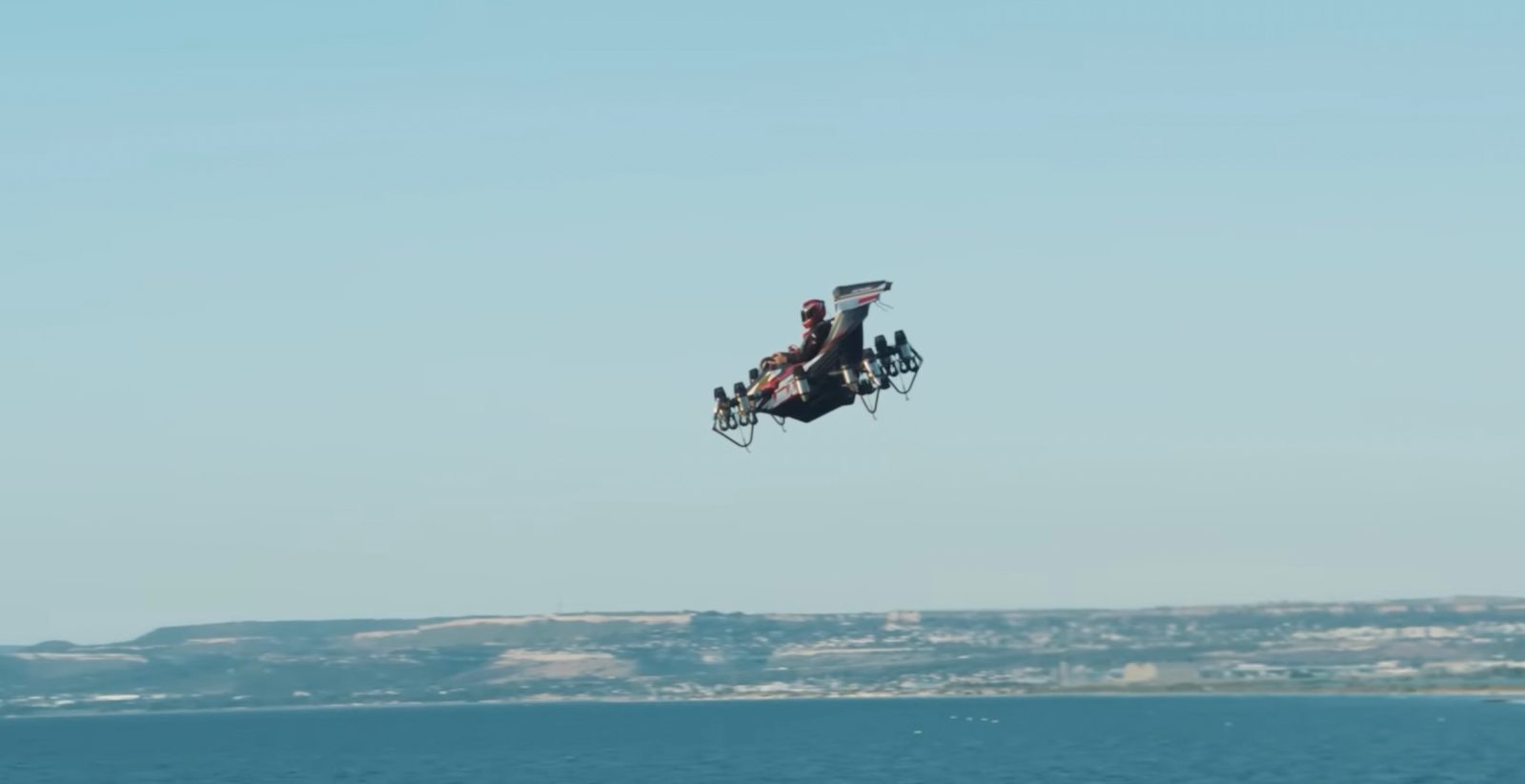
Fancy putting a single-seat, fast, highly maneuverable next-generation aircraft through the paces as a pioneering, George Jetson-esque test pilot? Well, step this way, because Zapata will be giving 25 lucky people the chance to fly its JetRacer flying car during US trials it has planned.
The JetRacer flying car was unveiled this month by former jet-ski world champion Franky Zapata, whose more recent fame involved the 2019 English Channel on his Hoverboard craft. The Frenchman’s eponymous company has produced a range of other micro jet-powered aerial vehicles that operate over water or ground surfaces, including the newly revealed JetRacer.
As part of that introduction, the Zapata company is inviting all interested parties to enter a drawing that will select 100 finalists wanting to fly its JetRacer flying car in a series of trials in the US. Only 25 of those finalists will be chosen to pilot the craft – presumably based on flight experience and aerial skills. Despite the long odds involved, however, that opportunity is one hardcore drone pilots or serious aerospace geeks will probably want to take a shot at.
Read: Personal use AIR ONE ‘flying car’ eVTOL makes its first test hover flights
Zapata’s JetRacer differs from other craft in the broad, possibly misnomer flying car category. Unlike Jetson One or AIR ONE electric vertical takeoff and landing (eVTOL) personal aircraft, for example, the JetRacer has no visible propellers, and is powered by kerosene rather than batteries. As such, its accent is more on strong sensations than sustainability.

It flies using 10 micro jet engines to reach altitudes of 3,000 meters, and attain lip-prying maximum speeds of 250 km/h. Those are far beyond the capacities of other personal eVTOL under development as commute or medium-range vehicles. Trial footage of Zapata at the controls of the flying car also indicate the JetRacer is capable of far tighter and trickier aerial maneuvers than other category craft.

“JetRacer is built on a light and modular chassis, allowing it to meet multiple needs, both civil and military, as well as being remotely controlled,” the Zapata product page for its flying car notes. “All critical systems are architected to provide an extremely high level of redundancy and safety: propulsion, control, power supply, etc.”
Read: Suzuki to back SkyDrive’s development of eVTOL flying cars
The aircraft is designed to be able to continue flying even if two of the 10 engines stop functioning. Zapata is working on two additional JetRacer prototypes for use in the US trials of the flying car, and is planning to market the craft to individuals, businesses, and security and military clients.
Awaiting a commercial rollout at some still unspecified date, Zapata will allow 25 fortunate test pilots to experience next-generation craft flight ahead of everyone else.
“Become the pioneers of the mobility of the future by participating in the flight test campaign in the United States,” its site says. “The future is now. Don’t wait. SIGN UP.”
FTC: We use income earning auto affiliate links. More.
Comments